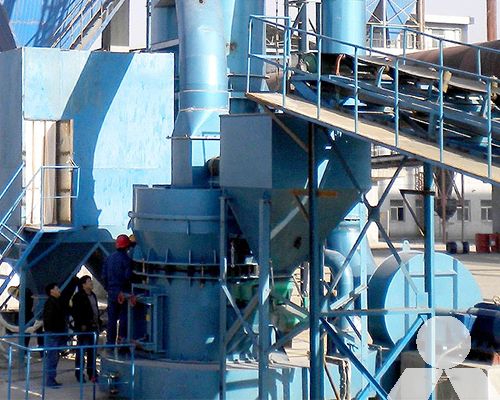How does a raymond mill work
Raymond mill is a widely used milling machine in various industries, known for its high efficiency and versatility in grinding various materials. Understanding its working principle is essential for anyone interested in the field of milling and grinding. In this article, we will delve into the fundamental principles that govern the operation of a Raymond mill.

1. Grinding Ring and Rollers: The core components of a Raymond mill are the grinding ring and a set of rollers, typically three or more. The grinding ring is a circular track that encloses the rollers. These rollers rotate around their own axes and simultaneously roll against the inside surface of the grinding ring. The materials to be ground are introduced into the mill through a feeder and fall onto the rotating grinding table.
2. Grinding Process: As the rollers rotate, they exert pressure on the material in the grinding ring. This pressure crushes and grinds the material into a fine powder. The centrifugal force generated by the rotating rollers pushes the ground material outward towards the edge of the grinding ring. Here, it is collected by a scraper and delivered to a classifier for further processing.
3. Classifier: The classifier is another critical component of the Raymond mill. Its primary function is to separate the fine powder from the coarse particles. It does this by using airflow and mechanical forces. The fine powder is carried away by the airflow and collected in a cyclone separator or a bag filter, while the coarse particles are returned to the grinding chamber for further processing.
4. Fan and Airflow: A powerful fan generates the airflow required for the grinding process. It draws air into the mill and circulates it through the system. This airflow not only helps transport the ground material but also cools the grinding chamber to prevent overheating.
5. Final Product Collection: After passing through the classifier, the fine powder is collected in a separate container or storage silo. This finely ground material can be used as the final product or further processed as needed, depending on the application.
6. Adjustment and Control: Operators can adjust various parameters of the Raymond mill, including the rotational speed of the rollers, the grinding pressure, and the airflow rate, to optimize the milling process for different materials and desired product specifications.
In summary, a Raymond mill operates on the principle of grinding materials between a rotating grinding ring and rollers. It utilizes pressure, centrifugal force, and airflow to crush, grind, and classify materials into fine powders. This versatile milling machine is widely used in industries such as mining, construction, and chemical processing for the production of various materials used in manufacturing and construction. Understanding its working principle is key to harnessing its capabilities effectively.









